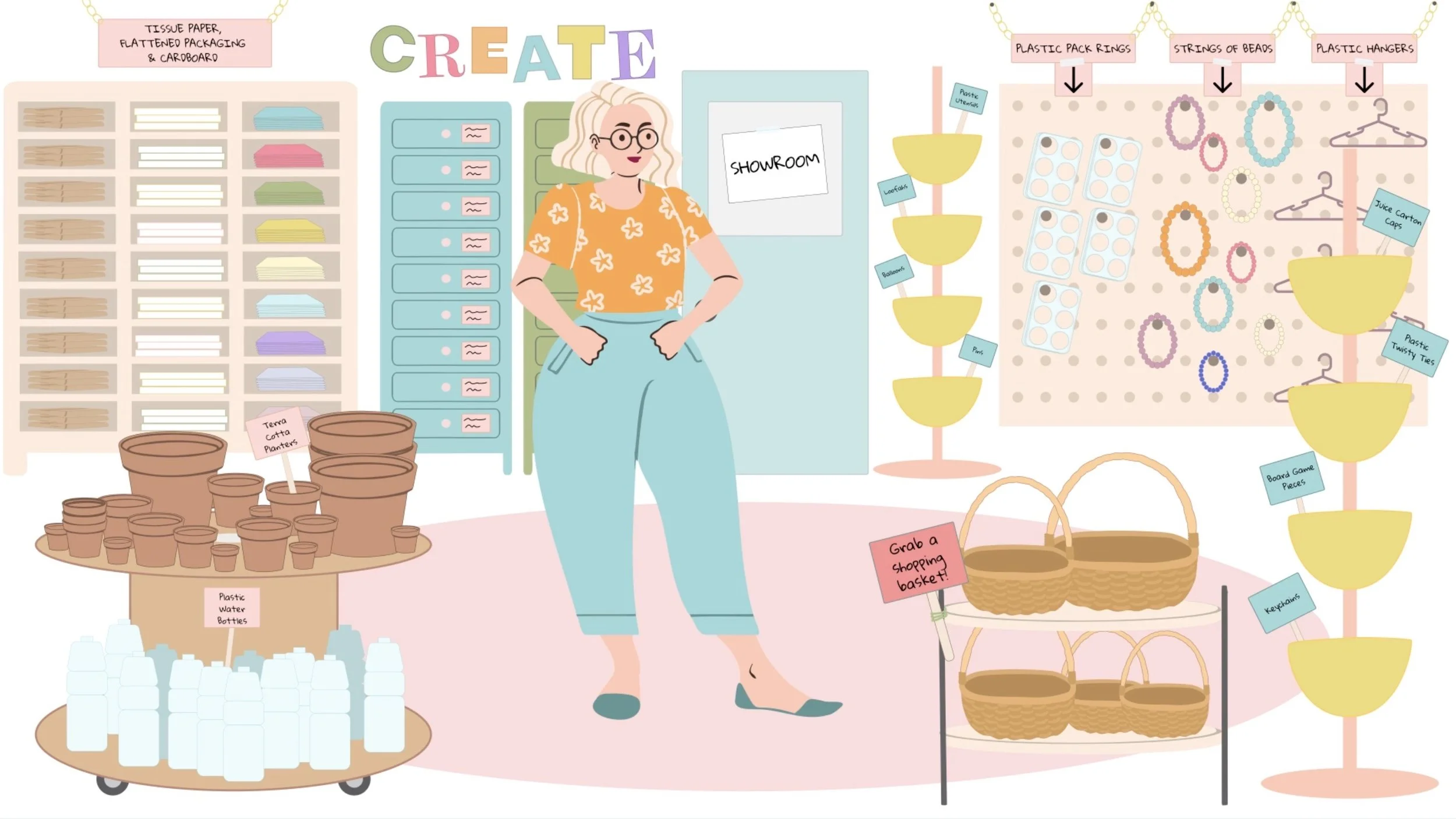The Junk Drawer
A community-fueled creative reuse service, donation center, gallery, and art studio.
Defining the Problem Space
From the start, I was interested in how to disrupt the recycling stream and divert non-recyclable materials from ending up where they don’t belong. Particularly, cardboard and paper materials. This was driven by the fact that many corporations are moving to plastic-free solutions and in turn, reaching for cardboard and paper alternatives.
While paper and cardboard decompose faster than plastic, the recycling stream for these materials is equally problematic. I believe we need to get ahead of the influx of discarded we will soon be bombarded with and find creative ways to repurpose, reuse, or recycle.
Desk Research
I started to explore this space by first educating myself on the answers to the following questions:
“What does it mean when something is recyclable?”
“What do the current recycling flows look like?”
This research helped me realize that for the scope of this project, it was important to consider my design at the local level. Community infrastructure defines what is or is not able to be recycled in a particular place based on the resources they have access to.
Primary Research
In tandem with this desk research, I also wanted to try and identify the motivations and barriers that individuals experience that cause them to opt in or opt out of recycling practices. In doing so, I could use these insights to inform my design.
To start to understand these spaces, I first posted a few single-question Instagram surveys and allowed those responses to help inform a more robust Google survey to which 21 individuals responded.
Synthesis
I used an affinity diagram to organize the survey responses into key themes. A myriad of interesting insights came out of these surveys, but the few that stuck out to me as being potential areas to leverage were:
In general, individuals are lacking knowledge about local recycling practices. They do not seek out resources to self educate and they typically rely on signage and documentation from service providers, which includes everything from information directly on their trash receptacles to signage within apartment building trash rooms. Regarding the latter, there is a clear inconsistency in the information displayed making it, in some cases, difficult to decipher.
There is a palpable distrust that items individuals make the effort to recycle will actually be recycled once they reach the processing center. This is a barrier for some.
A subset of individuals chooses to repurpose and reinvent objects and materials they would otherwise discard. They view this as a viable form of recycling and believe this alternative flow is equally worth their time.
While the four key ideas I’ve established through my initial research were valuable, I also came to realize that I needed to zoom in even further. What I was trying to tackle is a systemic problem, and the best way for me to try to have an impact is to design an actionable solution that was within my grasp and fit within the context of this project.
Opportunity
The necessity to zoom in further, in tandem with the insights gained from my initial exploration, led me to my opportunity and the question I would set out to answer:
Primary Research
Now having clarity on the opportunity I was designing for, I went back to the individuals who responded to the Google survey and indicated that they actively repurpose and reuse. Six of those individuals agreed to participate in in-depth interviews.
My intention in speaking with them further was to dig deeper into their motivations and the particulars of their practices.
Audience
Through the conducting of these interviews, I realized that my design could be successful if I target the very demographic I was speaking with.
By providing new opportunities for these individuals to expand upon their practice, I can further encourage their participation in these activities while finding ways to engage with the wider community to hopefully encourage them to consider a similar practice.
Design Implications
My primary research led to the following design implications and subsequent principles:
Design Principles
Final Concept
Concept Evaluation
There were several concepts that I evaluated with two cohorts; the first being individuals who identify as actively participating in repurpose and reinvention projects and the second being those who do not. I found there was a resounding preference for the concept above from the first cohort, and I used the findings from my second cohort to identify potential entry points for those outside of my target audience.
Furthermore, there were a few key sentiments that multiple individuals echoed which helped me realize I was headed in the right direction:
Storyboard Evaluation
Service Statement
Tapping into the energy of a studio while providing access to tools and materials that inspire and enhance the making process, The Junk Drawer is your one-stop shop for a collaborative workspace where you can leave projects in progress, connect with local makers, and showcase your work for the wider community.
Unlike other creative reuse centers that simply offer materials, for a nominal monthly fee, The Junk Drawer provides access to inspiring resources, a buzzing studio space, and a gallery to ignite conversation with the wider community.
Upcycling Case Study



























